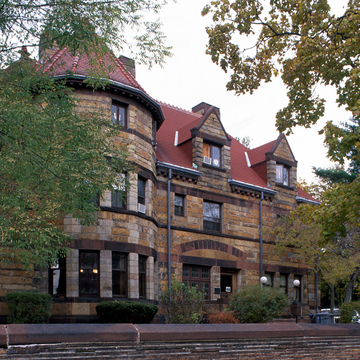You are here
Longy School of Music (Edwin H. Abbot House)
Wadsworth Longfellow and Frank Alden had both worked for H. H. Richardson, as this house attests. Built of ochre sandstone with bands of brownstone, the Abbot House resembles, among others, Richardson's Glessner House (1885) in Chicago. The relieving arch over the front entrance and the massive scale of ashlar block emphasize the weight and surface texture of the wall. The original building was L-shaped, with two towers, dormers, and chimneys counterpointing the horizontal feeling. Lines from “The Poet's Tale: Lady Wentworth” by Henry Wadsworth Longfellow evoke the mood of this design by his nephew's firm: “Gables and dormer-windows everywhere/And stacks of chimneys, rising in the air,—/Pandeaean pipes, on which all winds that blew/Made mournful music the whole winter through.” The Longy School of Music
Writing Credits
If SAH Archipedia has been useful to you, please consider supporting it.
SAH Archipedia tells the story of the United States through its buildings, landscapes, and cities. This freely available resource empowers the public with authoritative knowledge that deepens their understanding and appreciation of the built environment. But the Society of Architectural Historians, which created SAH Archipedia with University of Virginia Press, needs your support to maintain the high-caliber research, writing, photography, cartography, editing, design, and programming that make SAH Archipedia a trusted online resource available to all who value the history of place, heritage tourism, and learning.















